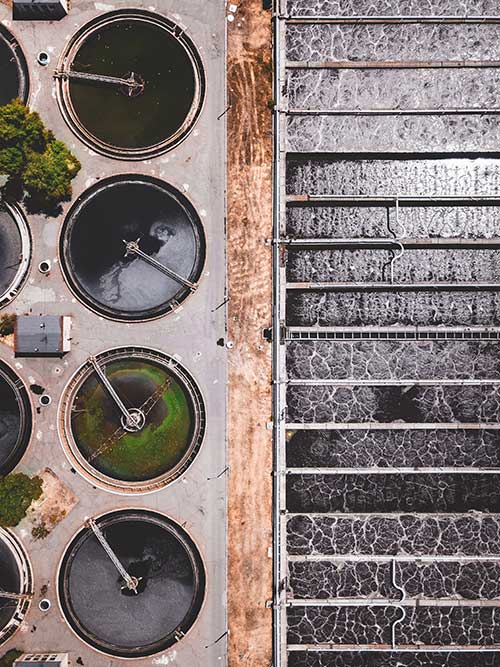Jose Mier Takes a Look at Conservation Efforts
Jose Mier is concerned about his hometown, Sun Valley, CA when it comes to water usage and recovery. Cities like Sun Valley are implementing various methods to recycle water. Here are some common approaches:
- Greywater Recycling: Greywater, which is wastewater generated from activities like bathing, laundry, and dishwashing, can be treated and reused for non-potable purposes such as irrigation, toilet flushing, and industrial processes.
- Rainwater Harvesting: Cities are adopting systems to capture and store rainwater from rooftops, parking lots, and other surfaces. This harvested water can be used for irrigation, landscape maintenance, and non-potable applications.
- Wastewater Treatment and Reuse: Advanced treatment technologies are employed to purify and treat wastewater, making it suitable for various purposes, including irrigation, industrial processes, and replenishing groundwater reserves.
- Desalination: In coastal cities, desalination plants are used to remove salt and impurities from seawater, providing a reliable source of freshwater. This method is especially useful in water-stressed regions.
- Aquifer Recharge: Treated wastewater or excess surface water is injected back into underground aquifers to replenish groundwater supplies. This method helps in maintaining water levels and preventing depletion.
- Stormwater Management: Cities are implementing measures to manage stormwater runoff efficiently, reducing its impact on the sewage system and preventing pollution. Techniques like permeable pavements, retention ponds, and green infrastructure are utilized.
- Water Recycling in Industries: Industrial facilities are increasingly adopting water recycling practices within their operations. Water is treated on-site and reused for processes such as cooling, rinsing, and equipment cleaning, minimizing fresh water consumption.
It’s important to note that the specific approaches adopted by cities may vary depending on their geographical location, available resources, and water management strategies.

Graywater Recycling
Graywater recycling in Los Angeles has emerged as a key strategy to address water scarcity and promote sustainable water management practices. As a city prone to periodic droughts and facing water supply challenges, Los Angeles has recognized the importance of utilizing alternative water sources, and graywater recycling has gained significant attention.
Graywater refers to the wastewater generated from domestic activities such as bathing, laundry, and handwashing. Unlike blackwater, which comes from toilets and contains fecal matter, graywater is relatively less contaminated and can be treated and reused for various purposes. Recycling graywater helps to reduce strain on freshwater supplies and minimize the discharge of wastewater into the environment.
In Los Angeles, graywater recycling is promoted through regulations, incentives, and public awareness campaigns. The city’s plumbing code allows for the installation of graywater systems, and the Department of Building and Safety provides guidelines for the safe and efficient use of graywater. These regulations ensure that graywater systems are installed properly, maintaining health and safety standards.
To encourage graywater recycling, Los Angeles offers financial incentives and rebates for residential and commercial properties that install graywater systems. These incentives help offset the costs associated with system installation and maintenance, making graywater recycling an attractive option for water-conscious residents and businesses.
Public awareness campaigns play a crucial role in promoting graywater recycling in Los Angeles. The city’s water conservation programs educate residents about the benefits of graywater reuse, providing information on system design, maintenance, and appropriate uses. Educational materials, workshops, and outreach events inform the public about the regulations and guidelines associated with graywater recycling, encouraging broader adoption of these systems.
Graywater recycling systems in Los Angeles typically involve the collection, treatment, and distribution of graywater for non-potable uses. The collection process involves diverting graywater from fixtures such as showers, bathtubs, and washing machines. This water is then directed to treatment systems, which remove contaminants and pathogens to ensure the water’s safety for reuse.
Various treatment methods are employed in graywater recycling systems. Common techniques include filtration, disinfection, and biological processes. Filters remove particles and debris, while disinfection methods, such as ultraviolet (UV) light or chlorine, eliminate harmful bacteria and microorganisms. Biological processes involve the use of plants or soil beds to naturally treat and filter the graywater.
Once treated, graywater can be utilized for non-potable purposes. Irrigation is a popular application, as treated graywater is suitable for watering landscapes, gardens, and green spaces. It reduces the reliance on freshwater for irrigation needs, conserving valuable drinking water resources. Graywater can also be used for toilet flushing, reducing the demand on the potable water supply.
In Los Angeles, the implementation of graywater recycling has demonstrated several environmental and economic benefits. By reducing the demand for freshwater, graywater recycling contributes to water conservation and sustainability. It helps alleviate stress on the city’s water sources, particularly during periods of drought, when water supplies are limited.
Graywater recycling also offers economic advantages. By reusing water onsite, residents and businesses can reduce their water bills and operating costs. The financial incentives provided by the city further encourage the adoption of graywater systems, making it a cost-effective and environmentally friendly solution.
Moreover, graywater recycling in Los Angeles contributes to the overall resilience of the city’s water infrastructure. By diversifying water sources and reducing dependence on imported water, graywater recycling helps create a more robust and self-sufficient water supply system.
However, it is important to note that while graywater recycling is a valuable strategy, it must be implemented responsibly. Proper maintenance and regular monitoring of graywater systems are essential to ensure their efficient operation and prevent any potential health or environmental risks. Compliance with regulations and guidelines is crucial to protect public health and maintain the integrity of the water supply.
In conclusion, graywater recycling in Los Angeles plays a vital role in addressing water scarcity and promoting sustainable water management practices. Through regulations, incentives, and public awareness campaigns, the city encourages the installation of graywater systems and promotes the safe and efficient reuse of wastewater. Graywater recycling not only conserves freshwater resources and reduces strain on the water supply but also offers economic benefits and enhances the resilience of the water infrastructure. By embracing graywater recycling, Los Angeles takes a significant step towards achieving a more sustainable and water-secure future.